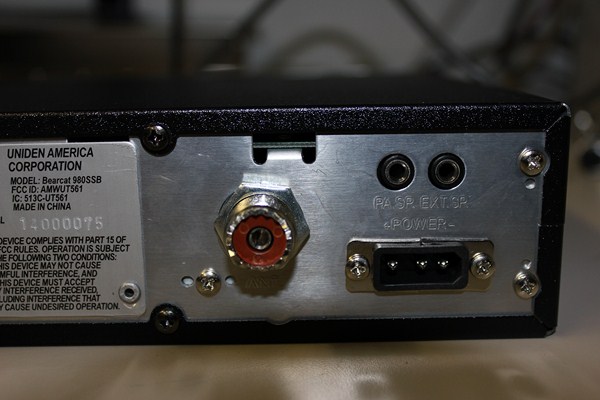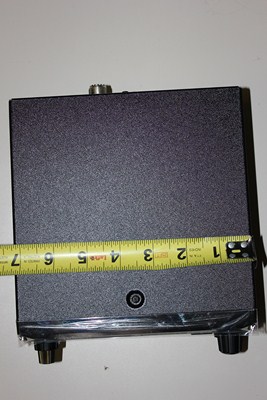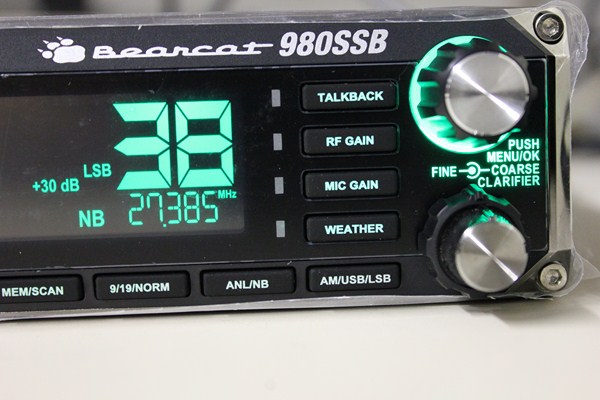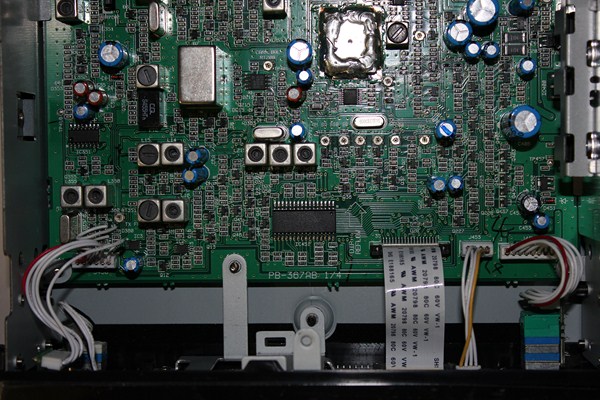UNIDEN BEARCAT 980 SSB CB RADIO REVIEW

The last time Uniden produced a new SSB CB radio we still purchased radios via mail order and we had never heard of something called the Iphone. The Uniden Grant XL and LT were arguably some of the most loved and trusted mobile SSB CB radios ever made. In deciding to jump back into the SSB game Uniden had a lot of hurdles to overcome. The SSB CB market was demanding a radio that was stable on SSB – the Galaxy radios just weren’t cutting it and even the newer style Cobra 148’s were suffering from frequency drift issues. Since it was 2012, they also had to release a radio that could offer features that would blend well with the technology of today’s world. Lastly they needed to create a radio that could talk well and actually perform.
All of that is a lot to ask of any radio company designing a new SSB radio for the first time in a decade, but the end result is the Uniden Bearcat 980 SSB and we’re here to tell you if this new radio fits the bill.
FIRST IMPRESSIONS
We had seen the sneak peek images and we knew the styling would be similar to the 880 AM CB we reviewed previously, so seeing the radio for the first time wasn’t a surprise. However I was impressed by the small size of the radio and knew right away that this radio would appeal to modern car owners. The days of large bulky CB radios are numbered, and rightly so, as most modern cars have fewer places to mount CB radios.
While the radio incorporates a lot of plastic into the faceplate it manages to do so without feeling cheap (in comparison to some of the late model Radio Shack CB’s). The radio comes with the standard mounting bracket, hardware, power cord, and the shiny Transformer-looking microphone.

The “Bearcat” labeling is still being used, and while this marketing ploy probably works on some of the new CB crowd or first time buyers, the tag line feels a bit outdated to me and I would have liked to have seen some updated marketing with the new radio.
Before I go much further let’s talk about the microphone. Compared to the radio it feels cheap and very plasticky in your hand. It’s a noise-cancelling microphone but like most factory microphones it’s lacking in its ability to produce good solid audio. My voice through the stock microphone sounded clear but very soft on the air even with me almost yelling into the microphone. If you are more than a casual user I would highly recommend ditching the stock microphone and replacing it with a solid-performing power microphone. The D104-M6B and EC-2018 Extreme both matched up well with this radio during testing and I’m sure others such as a DM-452 or Road Devil would give your audio a nice boost.
Some of the best reports I got on the air came when I hooked up my Turner +3 desk microphone.
WALK AROUND

The back of the radio looks fairly standard: antenna jack, 3 pin power cord, Ext speaker and PA jacks. Nothing exciting or out of the ordinary to see back here.
The radio is compact and the measurements don’t lie. A very square shape overall but the small size means this radio can be mounted in just about any vehicle.


The top and sides of the radio are fairly standard and you’ll notice the radio uses one screw on the side for the mounting bracket.
Microphone Plug – This radio uses a 6 pin microphone plug and is designed so that later they can use a wireless bluetooth microphone with this radio. The Uniden does come with a 4 pin to 6 pin adapter in the box so you can use any standard 4 pin microphone with this radio.

CONTROLS AND FEATURES
Below I detail out the knobs and buttons but I will mention that the feel of the controls knobs on this radio is really good. The channel changing knob has a very positive engagement as you turn it, so even though most of the radio face is plastic I liked the feel of the controls.

Vol/SQ – The volume control in the upper left also turns the radio on and off and the squelch control is on the outside knob.
Channel Selector/Menu – The large knob in the upper right is your channel changing knob and when pushed in it also will select the menu option which will come up on the LCD display.
Fine/Coarse Clarifier – The knob in the lower right hand size is the fine and coarse clarifier which allows you to adjust the receiving frequency to tune in other stations. The clarifier does not control or change your transmitting frequency.
S/RF/CAL/SWR – This button lets you toggle the display between a S/RF meter, a Calibration setting, and a SWR meter (reading).

CB/PA – This button toggles between CB mode and PA (Public Address) mode.
MEM/SCAN – Allows you to scan through the frequencies and add/delete frequencies to be scanned.
9/19/Norm – Instant channel 9 or 19 access or revert back to normal operation.
ANL/NB – Automatic Noise Limiter and Noise Blanker on/off options.
AM/USB/LSB – Mode button to change mode of operation.
Talkback – This allows you to set the talkback level on a variable scale.
RF Gain – Works similar to the talkback to allow variable RF gain setting.
Mic Gain – Variable microphone gain control.
Weather – Changes from CB mode to weather station monitoring mode (7 weather station frequencies are pre-loaded into the radio and you can change them by rotating the channel knob).

DISPLAY
This radio has a very nice LCD display that shows your RX/TX status, current channel (along with a readout of the frequency, a S/RF meter (which can also show SWR), and mode of operation. The display also will show your menu options and features as they are toggled on and off.
The display is bright and is much more readable in sunlight than many previous displays (Omegaforce, HR2510, etc).
Color options for the display are plentiful and the format is pretty much the same as the 880 radio we reviewed. There are seven colors which can be accessed through the menu function. Just about every knob and button on the radio has backlit text so all of the functions are easy to read in a night time environment.
MENU OPTIONS
The menu on this radio is basically the same as the 880 model and rather than discuss all of the functions here you can either read the manual or watch my video overview as I go through each function in detail. The menu is also very similar to the Cobra 29 LX model, for those that are familiar with that radio.
INSIDE THE RADIO
Inside the radio you can see the surface mount technology for this one. Inside the radio are lots of variable pots and it is possible to adjust your AM carrier, turn up your modulation, and adjust the ALC.



TRANSMIT / OUTPUT
A lot of CB’ers these days have gotten used to radios that can easily be tuned up for 20 watts output with just a couple of adjustments inside (Galaxy DX 959 as an example). The Uniden Bearcat 980 SSB is not going to yield the same results. In fact, the output on this radio is a bit mediocre. Out of the box you’ll see maybe 5-8 watts AM peak and 10-12 watts SSB peak. With a little bit of tuning you’ll see peak output of around 10 watts on AM and 15 watts SSB, but that is about it.
With some modifications the radio might achieve some higher numbers but I think people will need to accept that this is not some big swinging radio. If you put a swing kit in every radio and expect 1 watt swinging to 20 watts on AM this radio is not for you. However the basic CB output of this radio will match up well with most two pill amplifiers, so if you need more power an amplifier matched with this radio will be the way to go.
RECEIVE
I’ve done a little bit of complaining lately about the oversensitive receive on some of the newer SMT type radios coming out (Stryker 955HP, Alpha Max, CRE 8900), but the Uniden 980 doesn’t suffer from these issues at the same level.
The receiver on the Uniden 980 is sensitive and does border on the oversensitive side with some hiss, but overall it has much better out-of-the-box properties for receive than some of the newer export radios. Much like those other radios, though, it still has issues with noise when driving through areas with electrical interference and bleedover from nearby drivers talking on AM.
Overall I was fairly happy with the background noise level for this radio and incoming stations sounded clear and easy to understand. I did talk quite a bit of DX during testing and I picked up many far off stations who were at the static level and I had no trouble hearing them.
AUDIO
As mentioned before the stock microphone has got to go. Even after making adjustments to the modulation pot inside the radio (which didn’t yield much change in modulation) the stock microphone just wasn’t up to the task. Reports came back that I was quiet and hard to hear on both AM and SSB.
Adding a strong power microphone was a game changer on SSB and resulted in positive comments from everyone I talked to on the air. In fact when talking SSB DX I had multiple stations comment out of the blue on the quality of the audio and what a great sounding radio I was using.
I made some audio recordings and I also was impressed with the quality of the audio on SSB.
AM audio isn’t great. It’s passable but by no means is it loud or punchy even with the addition of the power microphone. If you play king of hill with the locals on AM this radio is not going to be walking on anyone.
SSB STABILITY
If this radio does anything extrodinarily well it’s maintaining frequency stability on SSB. For more than 20 years the CB community has fought and fiddled with radios that drifted up or down and required continual adjustment of the clarifier. The Uniden 980 requires no such adjustments. Out of the box the radio was spot on frequency (no cb shop alignment needed) and from turn on to turn off and in all operating environments I tested I never experienced any noticable drift.
For those of you who loved the stability of the old Uniden Grant radios you’ll find the same, if not better, stability in this new SSB radio.
FREQUENCY MODIFICATION/ EXTRA CHANNELS
This is the section where I would normally tell you how to convert this radio for freeband or additional frequencies but the sad truth is that there will be no extra frequencies for this radio. I even made a fake photoshop image below just to really rub some salt in the wound.

The radio uses software and that software operation is defined by the factory when it is flashed into the memory of the radio. Unless (and this is a big if) someone at the factory deliberately included the additional frequencies in the programming of the radio AND left a backdoor programming method to unlock those frequencies this radio will never do more than your standard 40 CB channels. The only other possibility would be if the programming software is somehow “leaked” and people figure out how to program the radios for the other frequencies.
In either scenario the ability for additional frequencies has to start at the factory and Uniden seems to be walking a very legal line with the FCC on these radios.
THE DREADED BEEEEEP
This radio makes a beep noise whever you do anything. Press a button or change the channel and very loud and annoying beep will occur. On later models there is a way to turn of the beep.
SUMMARY
The Uniden Bearcat 980 SSB is a huge deal for the CB world. It represents one of the giants in the industry taking the plunge back into the SSB world. The FCC approved SSB CB radio market in the U.S. has been small for quite a long time (Galaxy DX 949, Galaxy DX 959, Galaxy DX 979, Galaxy DX 2547, Cobra 148 GTL) so the introduction of a new option for consumers is good news for the CB radio community.
The Uniden Bearcat 980 SSB is going to appeal to a wide range of users due to its small size, modern styling, and multiple features. The SSB frequency stability is a big plus and something the SSB CB market has been lusting after for years. Its SSB audio with a power microphone is excellent and overall operation of the radio is easy and fun.
It misses the mark on AM audio and also on output numbers but those might be considered minor problems for most users. However the inability to perform a frequency modification may prove a big turnoff for the more serious SSB operators who consistently use the upper frequencies above the standard 40 channels to make DX contacts both in the U.S. and around the world.
